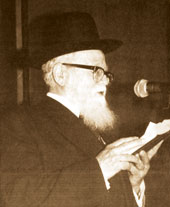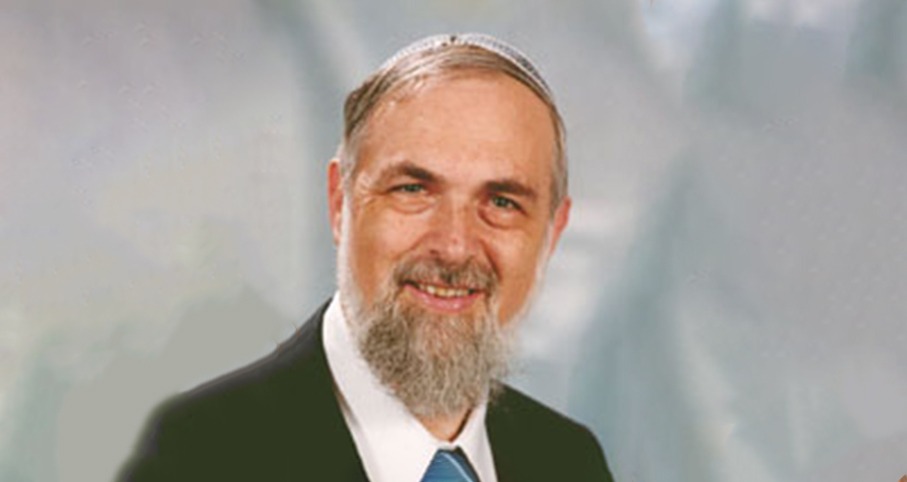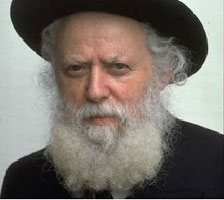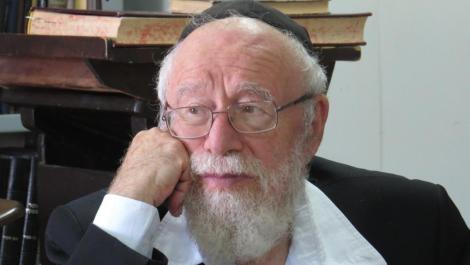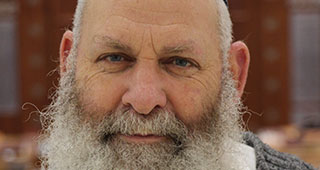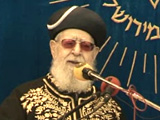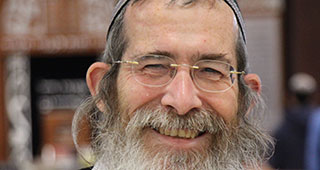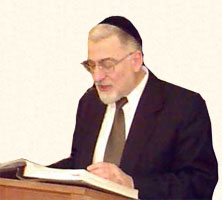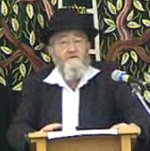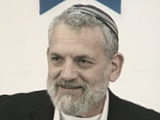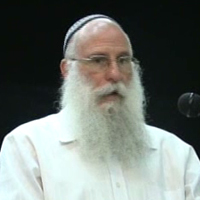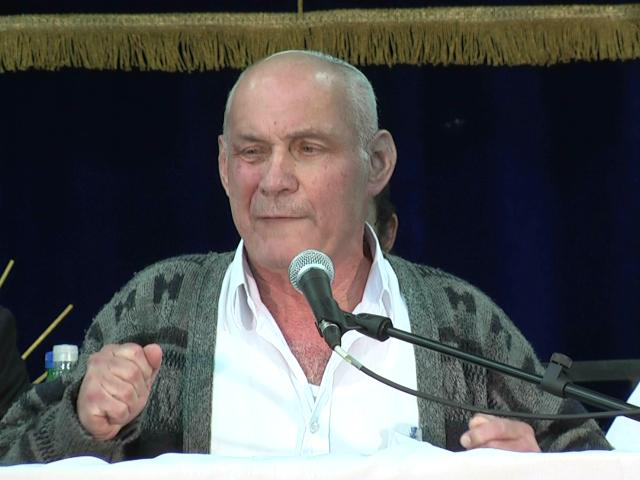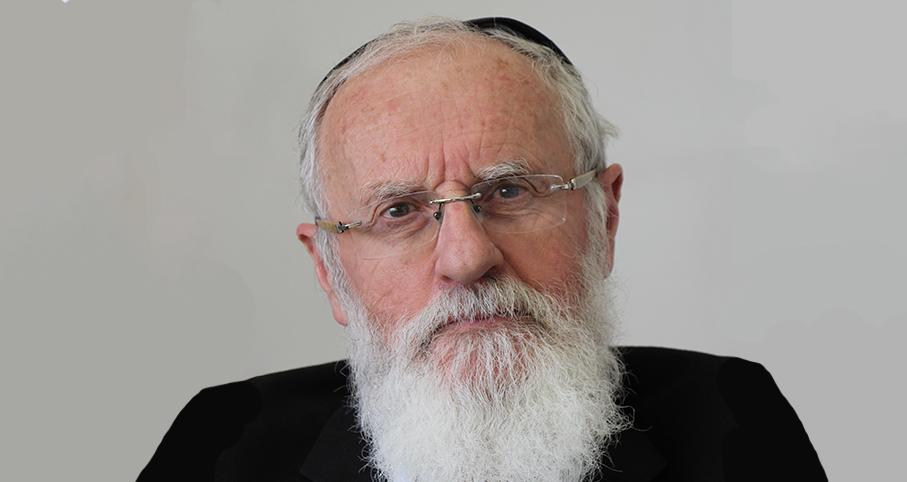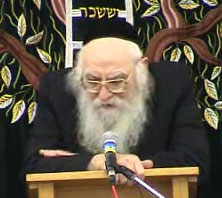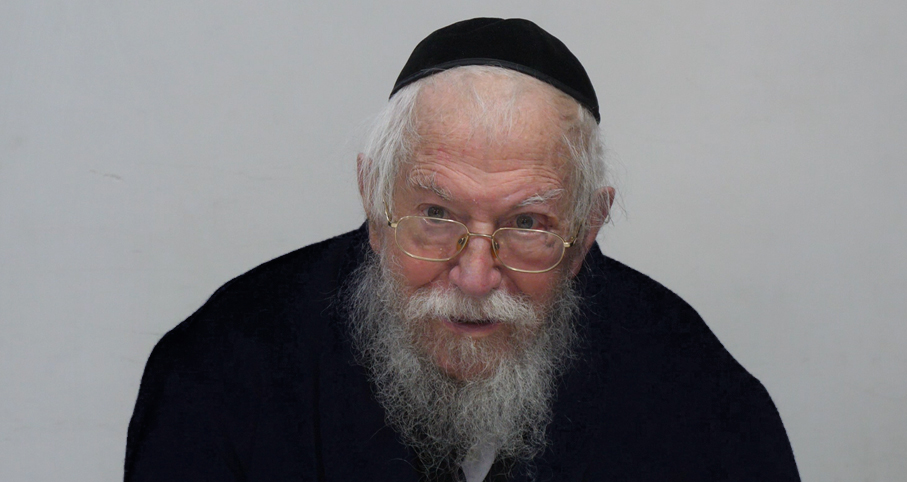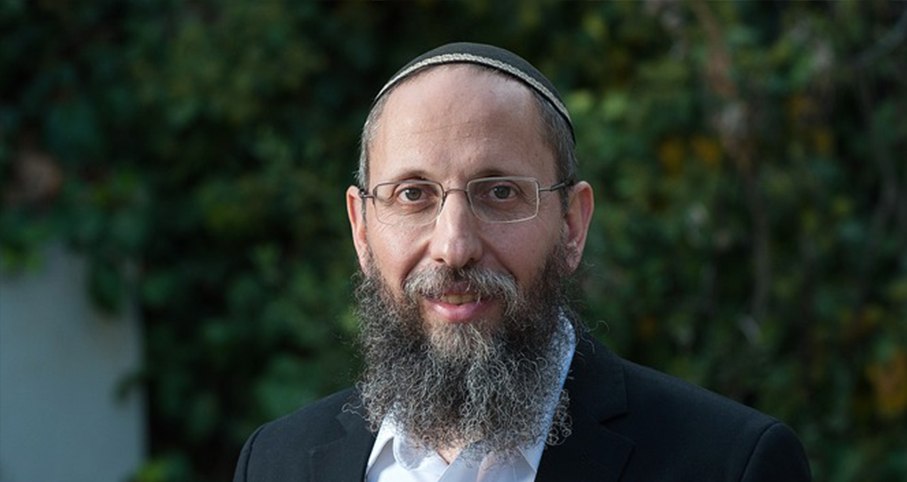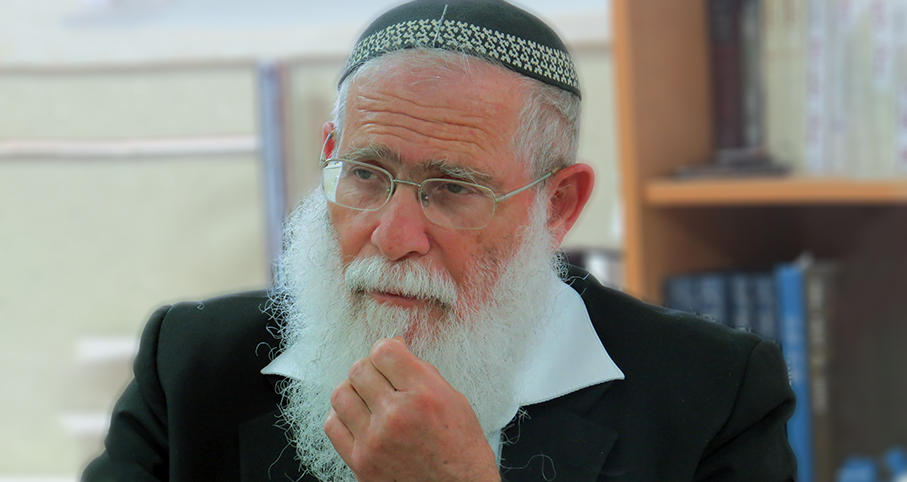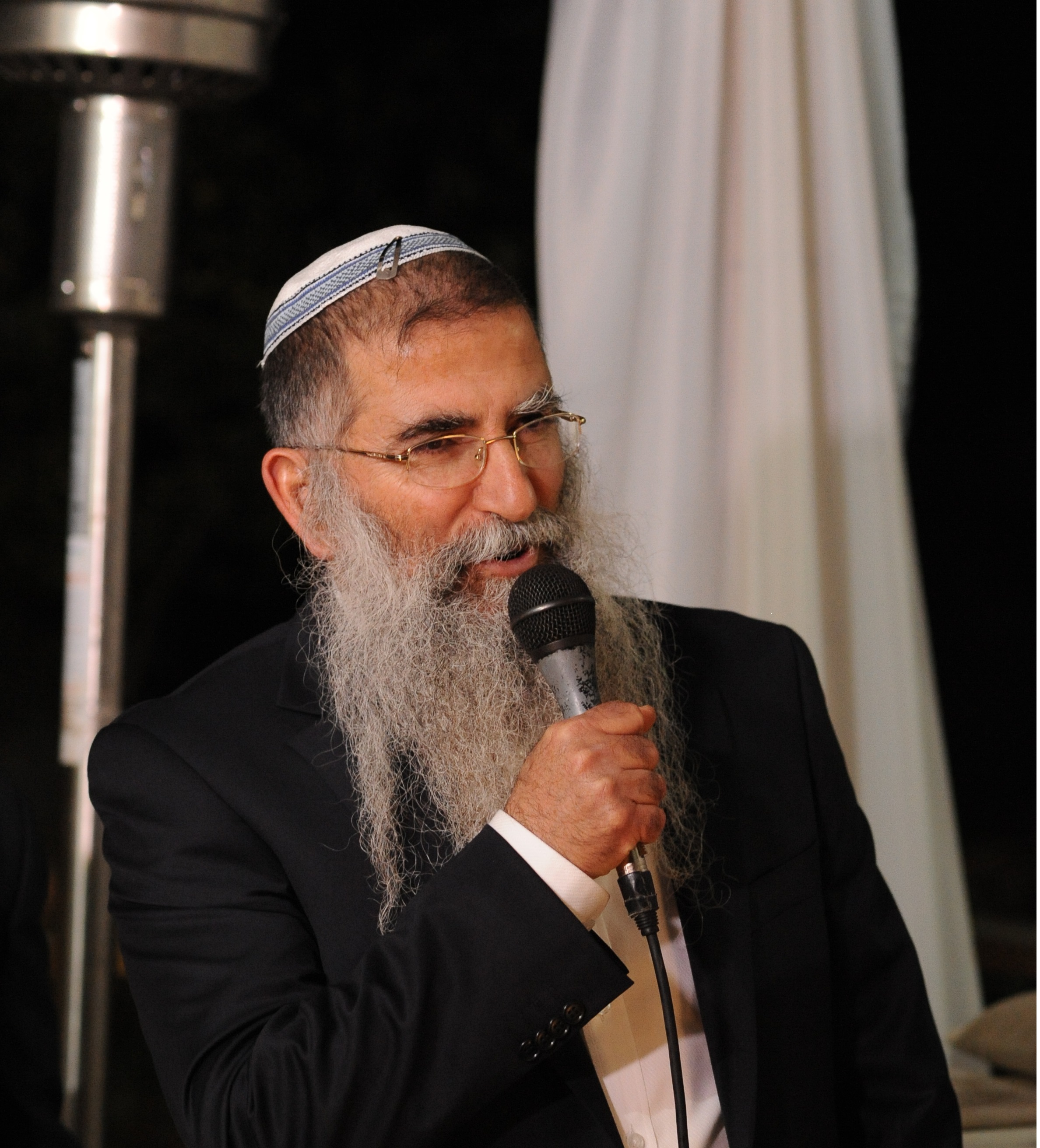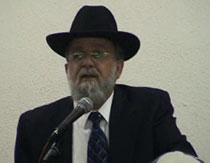Beit Midrash
- Shabbat and Holidays
- Jewish Holidays
- Sukkot
- Jewish Laws and Thoughts
- Jewish Laws and Customs
- Various Subjects
However, I digress. This article is about a series of shaylos asked not that long ago, when esrogim were rare and a town was fortunate to receive one kosher esrog for Sukkos. In a teshuvah written sometime in the mid-1890’s, one of the Lithuanian gedolim, HaRav Avrohom Dovid Rabinowitz Teumim ("the Aderes") wrote a shaylah to the posek hador of the Chassidim, Rav Shalom Mordechai Shvadron, the Maharsham, who was the rav of Brezan in Galicia. (The Maharsham was the grandfather and namesake of Rav Shalom Shvadron, the late Maggid of Yerushalayim.) Although the Aderes later became the Rav of Yerushalayim, he wrote this shaylah when he was still the Rav of Mir, which was then under the yoke of Czarist Russia. Thus this correspondence crossed international boundaries since Galicia was part of the Austro-Hungarian Hapsburg Empire. (Before the Russian Revolution, Mir was located in Russia, during the period between the two World Wars it was in Poland, and it is now located in Belarus. Jews always considered its region Lithuania, as does the Maharsham in his response to the Aderes. Thus, its residents were wandering Jews without ever leaving home!)
The correspondence was probably in 5635\1894, because the Aderes became Rav of Mir in 5634\1893, and presumably became aware of these questions at that time and sent them to the Maharsham shortly afterwards. The Aderes remained Rav of Mir until 5641\1901, when he left for Yerushalayim.
The Aderes faced the following halachic problems. Mir had grown considerably and its hundreds of baalei batim in their many shuls wanted to recite a bracha on the lulav and esrog. However, so few sets were available that several shullen or batei medrash would group together to communally purchase just one set of arba’ah minim for all their collective members. Then the shuls would stagger their davening schedules to make the set available to everyone during davening. This resulted in some interesting shaylos.
To facilitate everyone’s being able to bensch esrog, some shullen usually davened before sunrise on Yom Tov morning in order to be the first to recite a bracha on the lulav and esrog. (Such minyanim are jokingly known as "Terach’s minyanim," because whereas Avraham performed mitzvos at the first available opportunity, these early birds performed them even earlier than Avraham would have, back to the era of his father Terach.)
The Aderes asked the Maharsham whether these Terach’s minyanim could continue their practice of davening, reciting the bracha on the lulav and esrog (each member of the minyan), and then reciting Hallel - all before sunrise. (By the way, none of the correspondents I read discussed how these shullen performed the mitzvah of na’anuim, shaking the lulav and esrog during Hallel. Presumably, the lulav and esrog were passed around so that each individual could shake it while saying the appropriate parts of the Hallel, Hodu and Ana Hashem hoshiya na but that would mean that they did not recite these parts of Hallel in unison. Alternatively, only the chazzan performed na’anuim and the rest of the congregation observed.)
Although davening before sunrise is not permitted lechatchila, one may do so under extenuating circumstances. May one daven early to guarantee everyone the opportunity to recite a bracha on the lulav and esrog?
The Aderes was inclined to permit these minyanim to continue davening before sunrise for the following reasons:
The Mishnah (Megillah 20a) rules that although one may not read the Megillah or perform a bris milah before sunrise, someone who performed these mitzvos after halachic dawn (Amud Hashachar) has fulfilled one’s obligation. And under extenuating circumstances, one may even fulfill these mitzvos lechatchila before sunrise, provided it is after halachic dawn. Thus, it would seem that the need to allow everyone to take lulav and esrog in a timely fashion would permit the Terach’s minyanim to begin davening as early as they did.
The Aderes suggests an additional reason to permit davening before sunrise: Halachic day actually begins at Amud Hashachar (when the eastern horizon is lit), which is considerably earlier than sunrise; therefore all daytime mitzvos should technically be permitted from halachic dawn. However, the rabbis banned this, because of concern that someone might perform these mitzvos too early (before Amud Hashachar) and not fulfill them at all. The Aderes suggested that this concern no longer exists nowadays when people have clocks, because there is less likelihood that they will err and attempt to perform mitzvos too early.
The Aderes sent this inquiry to the Maharsham, who was known for his lenient rulings. Nevertheless, the Maharsham (Shu’t Maharsham #1) prohibited the Terach’s minyanim from davening so early for the following reason:
The Maharsham pointed out that these minyanim would be reciting Hallel before sunrise. Although under extenuating circumstances one may daven Shacharis before sunrise, Maharsham ruled that this lenience does not apply to Hallel because the Gemara (Megillah 20b) quotes a Biblical source that implies that Hallel can be recited only after sunrise: During Hallel we state, Mimizrach Shemesh ad mevo’oa, mehulal shem Hashem, from the rise of the sun until its setting, Hashem’s name should be praised. This implies that one may recite Hallel, the praise of Hashem, only after the rise of the sun, and no earlier. Based on this Gemara, Maharsham concludes that Hallel is halachically different from other daytime mitzvos and that reciting Hallel before sunrise does not fulfill the mitzvah at all.
The Aderes posed a second shaylah to the Maharsham: Other minyanim finished Shacharis and then awaited the arrival of the precious lulav and esrog before beginning Hallel, in order to shake the four minim during the Hallel. The Aderes had two concerns about this practice:
(1) That the wait caused a delay between Shmoneh Esrei and the full kaddish recited after Hallel, which includes the words Tiskabeil tzeloschon, Accept our prayers, that refer back to the Shmoneh Esrei. Should we avoid delaying between Shmoneh Esrei and kaddish?
(2) The Aderes was concerned that the members of the shul would talk, which halacha forbids, while awaiting the arrival of the arba’ah minim.
To resolve these two concerns, the Aderes wanted to introduce a new practice: These minyanim should recite the full kaddish before Hallel immediately after the repetition of Shmoneh Esrei, and when the esrog arrived they would recite Hallel, and then say half-kaddish after Hallel. The Aderes felt that this would eliminate both the delay and the talking before the kaddish had been recited.
The Aderes then suggested a different and more radical change in the order of davening. Immediately following shacharis, these minyanim should recite full kaddish, take out the sefer torah and read it, then recite musaf, and delay reciting Hallel until the lulav and esrog arrived by reciting Hallel after musaf. This would avoid the problem of people talking between shacharis and Hallel, and would also enable these shullen to finish davening earlier on Yom Tov. This last concern was not only a practical consideration but also a halachic one since one should try to end Yom Tov davening early in order to allow more time for simchas Yom Tov. (Chazzonim, please take note!)
The Maharsham disapproved of both of the Aderes’s suggestions. First, he contended that one may not introduce a different part of davening between Shmoneh Esrei of shacharis and Hallel. He also contended that Hallel is part of the tefillah and that davening shacharis is not completed until Hallel is recited. Maharsham compares interrupting between shacharis and Hallel to interrupting before one has heard all the shofar soundings or completed searching for his chometz, which is prohibited according to halacha. He concludes that since Hallel is part of shacharis, the full kaddish may not be recited until Hallel is complete.
The Maharsham’s source to consider Hallel part of shacharis is intriguing. He reports that in his text of Tosefta (Menachos 6:6) it states that "Hallel and prayer are me’akaiv one another," meaning that one cannot fulfill these two mitzvos independently of one another. The Maharsham reasons that Hallel must thereby be considered part of the mitzvah of davening and therefore nothing may be added to interrupt between them. Furthermore, since Hallel is part of shacharis, the supplication in the full kaddish to "accept our prayers" also refers to Hallel and must therefore follow Hallel - whereas the Aderes’s suggestions would make this kaddish precede Hallel. As a result, the Maharsham ruled that one may not recite full kaddish before completing Hallel. However, the Maharsham did rule leniently in one issue - he contended that only the chazzan is prohibited from talking between the completion of Shmoneh Esrei and reciting the kaddish, noting that on a regular weekday the chazzan is prohibited from conversing from his completion of Shmoneh Esrei until he recites the full kaddish, even though the kaddish is not recited until after keriyas hatorah and the reciting of ashrei, lam’natzayach, and uva l’tziyon.
The Maharsham mentions that he wrote this responsum without having access to any commentaries on the Tosefta in question. This is significant, because our commentaries on the Tosefta cite a different text than that quoted by the Maharsham, which reads, Praise (rather than Hallel) and tefillah are me’akaiv one another. (Note that the printed text of the Tosefta is not necessarily correct and that the commentaries often attempt to clarify what the correct version is.) According to this reading, the Tosefta probably means that the beginning of any prayer must be praise and only then may it be followed by supplication, a very important halacha in the laws of tefillah (Mitzpeh Shmuel), which the Rambam records in Hilchos Tefillah 1:2. According to this reading of the Tosefta, it has nothing to do with Hallel and our shaylah.
Let us return to the correspondence between the Aderes and the Maharsham. The Aderes proposed another possibility: that the shuls make kiddush and have something to eat before Hallel. The Maharsham disputed the legitimacy of this heter also, ruling that since Hallel is part of davening, one may not eat before Hallel just as one may not eat before tefillah. There is also a halachic issue with reciting kiddush and eating before fulfilling the mitzvah of holding the four minim or before davening musaf.
Another suggestion that both the Aderes and the Maharsham discuss and reject is to recite Hallel twice, once immediately following shacharis so that there is no interruption, and then a second time (presumably without a bracha) so that the congregants could then shake the lulav and esrog during Hallel. This suggestion, which may sound very strange to us, actually has a very reputable earlier source to which they both refer.
A generation or two before their time, when communities were faced with the same lack of lulavim and esrogim, we find the following responsum in Shu’t Sho’el Umeishiv (3:1:120), authored by HaRav Yosef Shaul Natanzon, the Rav of Lvov (Lemberg) and the posek hador of his time in Galicia. Because of the difficulties involved in reciting the brachos over the lulav and esrog before Hallel while at the same time wanting to celebrate Yom Tov properly, many had the practice of davening shacharis very early including Hallel without the arba’ah minim (that were still being used in other shullen) and then going home to eat the Yom Tov meal. After the seudah, these people would return to shul and recite Hallel with a later minyan, this time fulfilling the mitzvah of arba’ah minim while reciting Hallel. Although the Sho’el Umeishiv quotes sources that disapprove of reciting Hallel twice in this way, he seems to have no difficulty with this part of the practice. He does object to it because they ate their Yom Tov meal before davening musaf.
Nevertheless, it is probably permitted to eat a snack, but not a meal, before reciting Hallel or shaking the four minim. For our purposes, a snack means eating a k’beitzah (the size of an egg) or less of either bread or mezonos produced from the five grains, whereas one may eat as much fruit, vegetable, and shehakol items as one wants. Rice, for these purposes, is like a vegetable. Thus, one could eat a filling snack of rice, potatoes, and meat before reciting Hallel without violating this halacha. The Sho’el Umeishiv’s concern was that these people ate a full Yom Tov seudah before davening musaf, which is not halachically permitted.
In the final analysis, the Maharsham did not approve any of the Aderes’s suggestions to change the procedures, and also did not approve the practice of the Terach’s minyanim to daven very early.
This is how communities were forced to fulfill the mitzvos of Hallel, arba’ah minim, tefillah, and simchas Yom Tov as best as they could under less than ideal circumstances. When we look around the shul nowadays seeing everyone holding their own sets of arba’ah minim, we should sing praises to Hashem for helping us fulfill these mitzvos so easily.
This article was originally published in the American edition of Yated Neeman.
This Shiur is published also at Rabbi Kaganof's site

May I Smell my Esrog and Hadasim on Sukkos?
Rabbi Yirmiyohu Kaganoff | 5769
